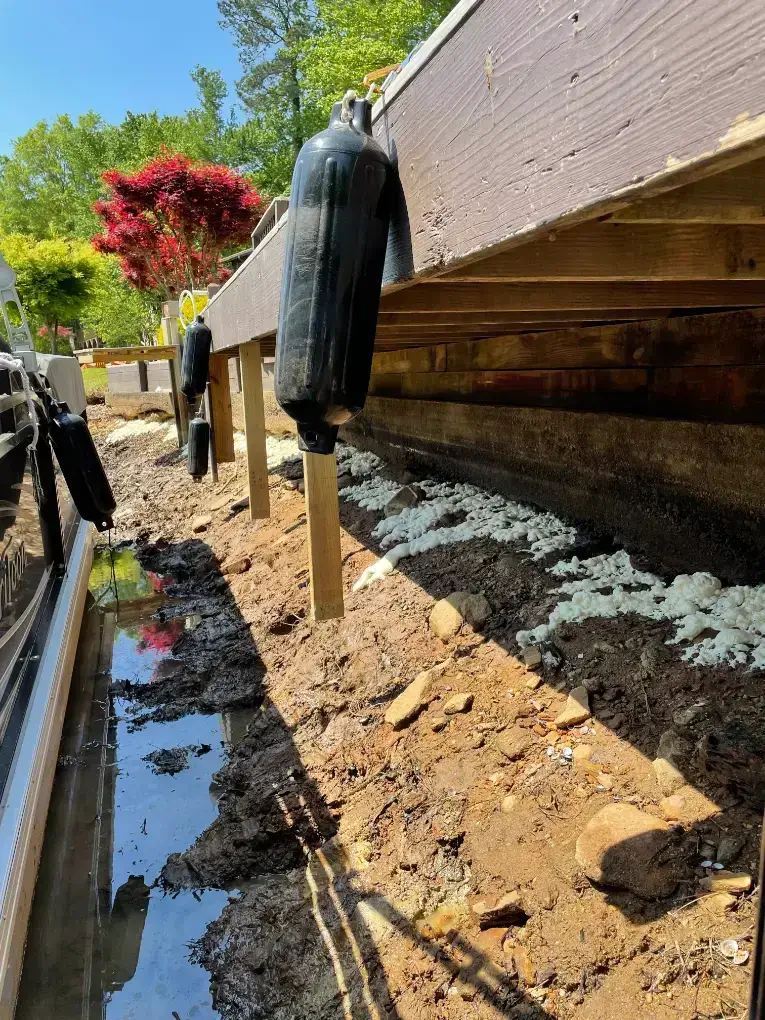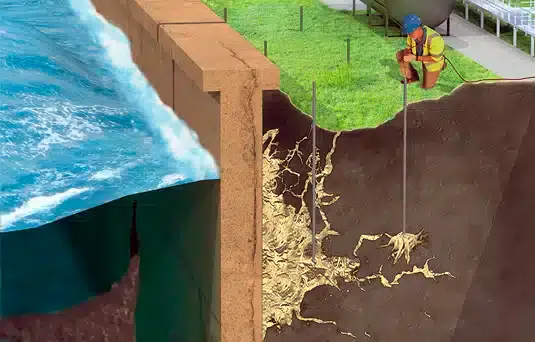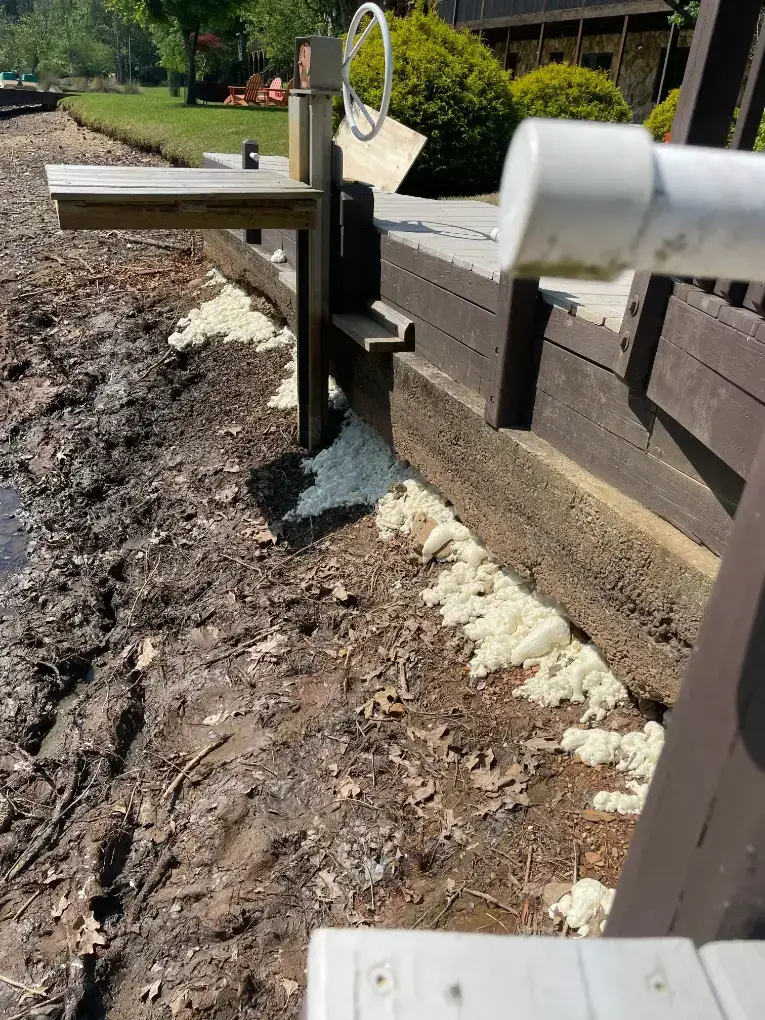
How to Repair a Seawall
The powerful forces of water can eventually damage any seawall. A seawall has many components that all need to work together. When one part fails, the entire structure is at risk. A couple of common causes typically make seawalls fail prematurely. Understanding seawall failure is an essential prerequisite to learning how to repair a seawall.
Hydrostatic Pressure and Seawall Failure
Hydrostatic pressure buildup on the landward side is one of the main causes of seawall failure. Water accumulation on the landward side of the seawall causes this pressure to build up. This buildup often causes cracks to form in the seawall, allowing water to leak through from the landward side to the waterward side. As the water leaks through, it carries supporting soil with it. We call this process soil migration.

Soil Migration and Seawall Failure
Soil migration can also cause voids to form behind the seawall when the water washes soil away from behind the structure, leaving a gap between the seawall and the ground. These void formations further destabilize the seawall, increasing the risk of failure. If no one addresses the combination of hydrostatic pressure buildup and the resulting soil migration, it can quickly lead to seawall failure.
How to Repair a Seawall with Structural Polymers
Fortunately, a solution exists that doesn’t require completely replacing the seawall. Professionally trained contractors use a proprietary repair process to fix damaged seawalls. Here’s how it works:
- Step 1: Stabilize Soil, Seal Leaks, and Fill Voids with Structural Polymers First, repair crews perform deep injections of SW-RP1 polymer repair material directly behind each seawall panel joint. This material fills any voids while also penetrating and hardening the surrounding soil to the strength of crystalline bedrock. Additionally, it fills cracks and old weep holes to seal any leaks. SW-RP1 is NSF-certified to meet strict environmental standards.
- Step 2: Install New Pressure Relief System Next, the crew cores new channels through the polymer-filled weep holes, extending into the soil behind the wall. They then install proprietary pressure release technology in these channels. This technology regulates hydrostatic pressure by allowing water to flow through from the landward side to the waterward side. Moreover, it stops soil migration by preventing soil from passing through the channels.

The Result: A Permanent Fix
The high-strength SW-RP1 material provides critical structural support. Combined with the pressure regulation, this protects the seawall from any subsequent shifting, damage, or collapse. It’s a permanent, eco-friendly solution that costs up to 80% less than total seawall replacement. Moreover, this process is much faster and less invasive than replacement.
Get Your Seawall Repaired Now
Don’t let hydrostatic pressure and soil migration cause your seawall to deteriorate to the point of failure. Have it professionally repaired by an experienced contractor. Contact us today for a free estimate and let us help you win the battle against Mother Nature’s relentless forces.
Get Free Quote We Are Proud Affiliates Of: Table of Contents The problem of sinking concrete along the coast of Florida...
We Are Proud Affiliates Of: Table of Contents Coastal barriers are needed to safeguard structures and populations from the continuous impact...
We Are Proud Affiliates Of: Whether it is your driveway, walkway, or patio, uneven or sunken concrete surfaces are both an...
We Are Proud Affiliates Of: One of beachfront owners’ concerns in the Florida Panhandle is coastal erosion, as the waves and...


